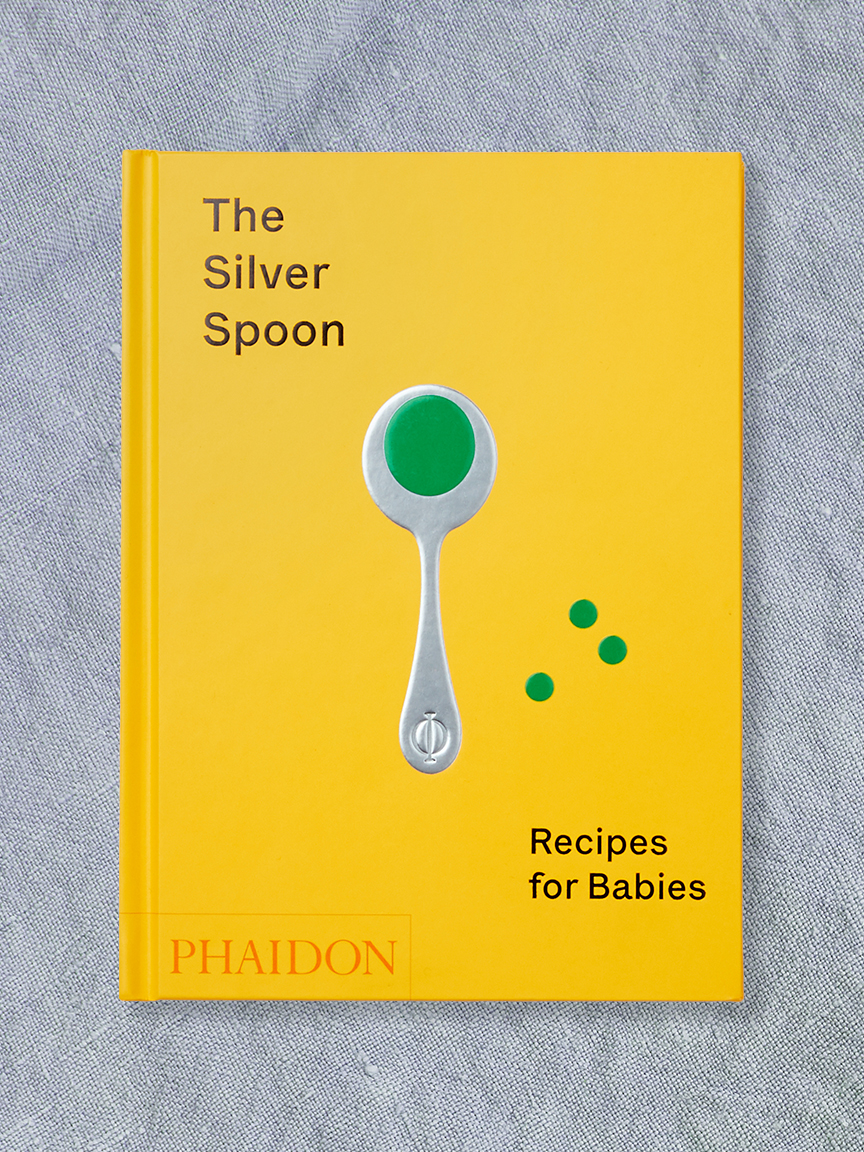We may earn revenue from the products available on this page and participate in affiliate programs.
Cookbooks are enjoying a new kind of celebrity in our kitchens these days, as we rely on them to help us switch up the meal routine. But cooking for babies can be a uniquely difficult challenge: Prep can truly seem like you’re making the same dish over and over—which is why we’re so excited about The Silver Spoon: Recipes for Babies. The just-launched book includes tips on everything from toddler-proofing your ingredients to whipping up fresh purees for baby’s very first meal, and we’re predicting it is going to be required reading for anyone with questions about feeding their little ones.
Written by children’s nutrition specialist Amanda Grant, it’s focused on an Italian approach to cookery (which explains the inclusion of dishes like risotto with peas and Ligurian-style cream soup). On each brightly illustrated recipe page, you’ll also find handy ideas on making the most of the ingredients list—whether that’s advice on what seasonal produce can be swapped in or how to freeze extra broth.
Grant also provides a useful playbook for planning your pantry essentials: “The advantage of keeping a well-stocked, neatly organized pantry is that you only need to restock those items that you use regularly a couple times each month,” she writes. To minimize supermarket trips, there are a few staples she recommends always having on hand: Baby rice, corn, tapioca, and gluten-free cereal flour products are ideal up to seven months, after which wheat-based soup pasta can be introduced; extra virgin olive oil, the star of every Italian kitchen, is a healthy fat that contains valuable antioxidants (start by adding just a few drops in baby’s cereal); and dried legumes or pulses can be served after eight months, whether you soak them overnight or go for the canned variety.

In addition to suggesting bulk buying certain dried goods, Grant talks about the benefits of freezing food. As long as you can spare the fridge space, prepping these foods in advance and tucking them away will save you lots of time down the road:
- Vegetable broth and meat broth serve as the base for any cereals; save yourself time down the road by prepping a large batch to defrost whenever needed.
- Pureed vegetables can easily be divided up into individual portions and stored in airtight containers.
- White fish fillets are a useful staple after eight months—just be sure to check thoroughly for small bones.
- Fresh tomato sauce is great to have on-hand for your baby’s first pasta dishes. For peak freshness, make it in bulk at the height of summer season and enjoy that flavor for weeks to come.
- Frozen Vegetables and pulses are a pediatrician-approved way to get those nutrients in when your favorites are out of season. Peas and spinach, which are naturally stewed, can be kept in the freezer for a while; take it a step further by preserving small portions of soffritto (a finely chopped aromatic mix of onion, carrot, and celery slowly fried in olive oil) to develop new palates.

The cookbook is officially available to buy today, just as all of summer’s fruits and vegetables come into season. While you wait for your copy to arrive, we got a sneak peek at some of our favorite meals.
Baby’s First Pasta Carbonara
Ideal for: 8-24 months Prep time: 5 minutes Cook time: 4 minutes Serving size: 1 portion
The Ingredients
- 1 cup vegetable broth or stock
- 2 tbsp short angel hair soup noodles
- 1 small egg yolk
- 1 tsp grated hard cheese, such as Parmesan
- 1 tsp extra virgin olive oil
The Recipe
- Bring vegetable broth to a boil in a pan, add the noodles, and cook for four minutes (or the time indicated in the packet directions). In the meantime, use a fork to beat the egg yolk with the grated cheese in a deep plate until only slightly runny.
- Drain the pasta and, while still steaming hot, immediately add the noodles to the plate with the beaten egg and cheese. Mix everything very well until it’s evenly coated and the heat from the angel hair cooks the yolk.
- Mix in the olive oil and serve, making sure that the egg yolk is cooked through—do not add salt!
Note: Start with half an egg. This first version of the classic pasta carbonara uses only the yolk of a small egg, which can be introduced to infants in the 11th month. If you have a larger egg, separate the yolk onto a plate and beat with a fork. Remove 1 or 2 teaspoons of yolk from the plate and mix the rest with the grated cheese. Because a high-protein intake is not recommended for children under the age of 12 months, just a very small amount is added.
Yogurt, Ricotta, and Persimmon Mousse
Ideal for: 8-24 months Prep time: 5 minutes Serving size: 1 portion
The Ingredients
- 1 ripe persimmon
- 1 ½ tbsp ricotta cheese
- ⅓ cup full-fat plain yogurt
The Recipe
- Peel the persimmon. Using a handheld immersion blender or food processor, blend the fruit with the ricotta, gradually adding the yogurt a spoonful at a time, until smooth.
- Transfer to a bowl and serve with a spoon.
Note: You can also make this afternoon snack with any seasonal fruit, provided it is suitable for infants under 12 months. Blending the ricotta with fruit that has a high water content, such as persimmon or melon, produces a puree with a creamy consistency. Blending it with drier fruit, such as an apple, results in a softer consistency. A creamy puree will be smoother and incorporate better with the yogurt, a product that is high in protein, calcium, phosphorus, and probiotics.
It’s hammer time: Follow @reno_notebook for easy rental updates, clever DIYs, and tips to nail your next project.
